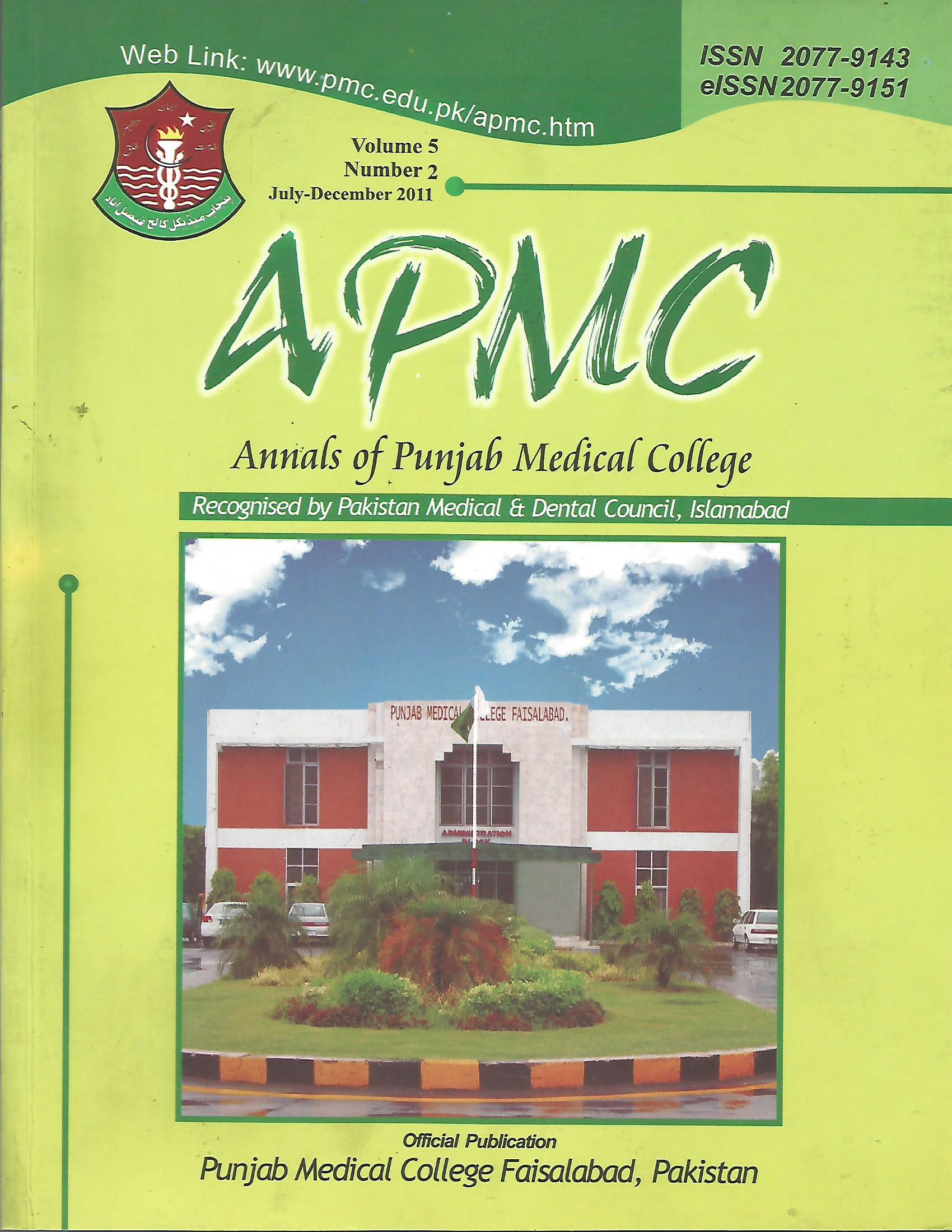Post-traumatic Stress Disorder after Myocardial Infarction
Abstract
Introduction: Post-traumatic stress disorder (PTSD) is a severe anxiety disorder that can develop after exposure to any forms of traumatic events including myocardial infarction (MI). PTSD after MI may affect quality of life and cardiovascular outcome. The objective of this study is to determine the frequency of PTSD after MI. Methods: This is a cross sectional study. A convenient sample of 98 patients with a documented history of MI, visiting the outdoor departments of 4 tertiary care hospitals in Lahore (Sheikh Zaid hospital and Jinnah hospital) and Faisalabad (Allied Hospital and Faisalabad Institute of Cardiology) for follow ups, were evaluated for the development of Post-traumatic stress disorder using the Diagnostic and Statistical Manual of Mental Disorders, Fourth Edition (DSM-IV), World Health Organization Quality of Life (WHOQOL)-BREF questionnaire and demographic questionnaire. Descriptive analysis of the data was carried out using the Statistical package for social services (SPSS) software version 17. Results: Out of 98 patients (59 males, 39 females) 8 (8.2%) patients (males 3 %, females 5%) were found to develop PTSD after MI. Patients with older age
(above 50 years) had a higher frequency of PTSD (21%), as compared to middle aged (between 30 and 50 years)and young aged (below 30 years) patients (5% and 0% respectively). Illiterate patients developed PTSD (13.8%) while none of the literate patient developed PTSD. Frequency of PTSD in working and non-working patients was 4.5% and 11% respectively. The frequency in poor patients was 13.2%, in middle class was 2.8% whereas no patient falling in the rich socio economic class developed PTSD. Only patients with poor quality of life developed PTSD (13.8%). Patients who experienced silent MI did not develop PTSD while those with severe MI developed PTSD (18.6%). Conclusion: The study highlighted the development of PTSD after MI. The patients with female sex, old age, poor economic condition, poor quality of life, non-working status, low education and severe MI had a higher frequency of PTSD. These risk factors identified in the present study can be used to facilitate the detection of patients at risk for developing PTSD symptoms so they can later be offered psychological interventions as needed.

 This work is licensed under a
This work is licensed under a 